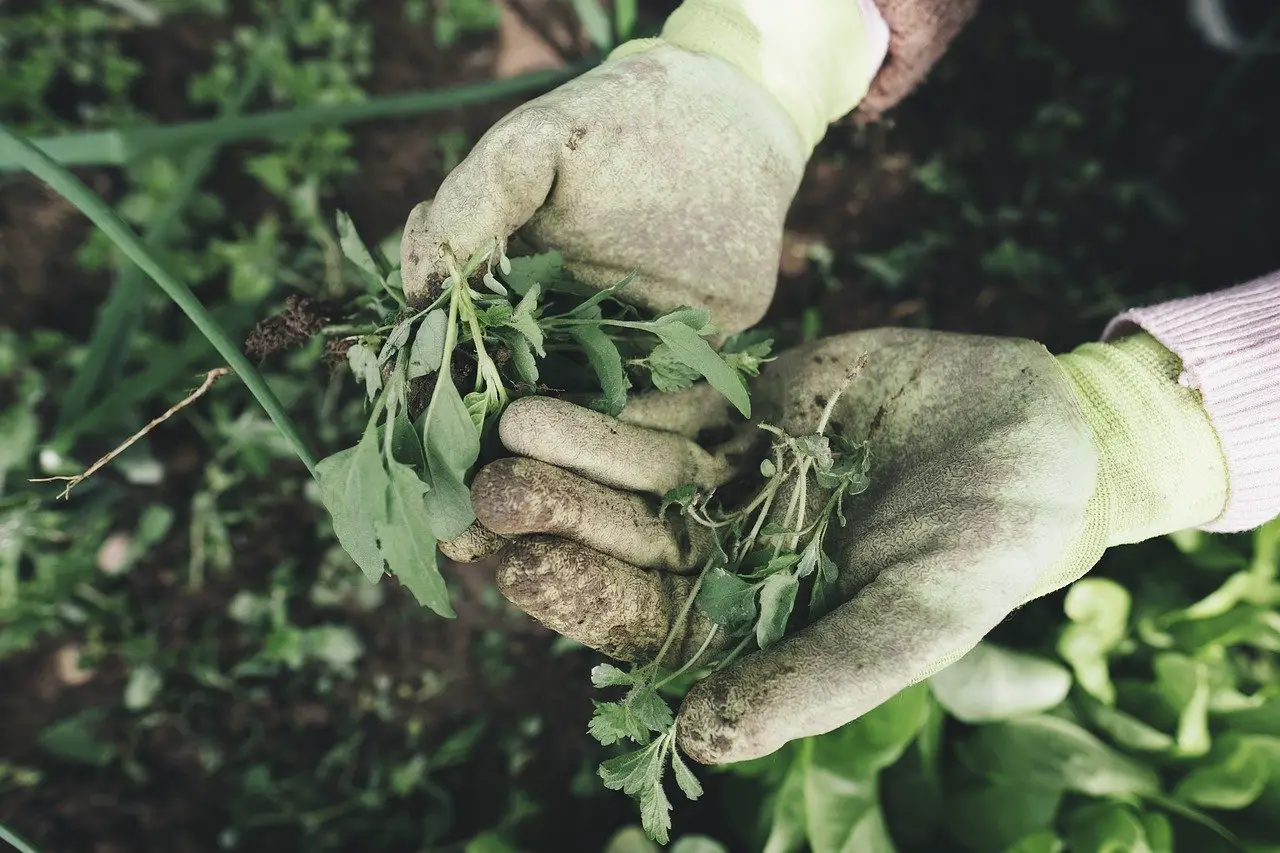Last Updated on April 5, 2024 by Real Men Sow
It’s tempting to grab a weed killer spray when you want to control weeds in your outdoor spaces, such as lawns, patios, and driveways. But It’s important to consider pet-friendly weed killers for all who use the outdoors.
When your pet walks on treated ground or brushes through sprayed foliage, harmful chemicals can get on its paws and fur. These chemicals can then be ingested by your pet when it grooms itself. Rainwater or hose water can wash chemicals off plants and ground, collecting in puddles that wildlife and pets may drink.

Pet-friendly Weed Killer Methods Without Harmful Chemicals:
- Hand weeding – There are many weeding tools available, including weeding knives and long-handled hoes. You can quickly get rid of weeds on a dry and breezy day by cutting them off the soil’s surface
- Weed burners – Gas- or electric-powered weed burners can be used to burn weed growth. They are especially useful for treating weeds in patios, driveways, and paving cracks. It is slow to use so it is only practical for small areas
- Pressure washing of hard surfaces – Get rid of small weeds like moss and remove soil and organic matter residues that could be used to make seedbeds for weeds.
- Boiling water – Simply pour it over to kill any leaf growth, but it will not work on the roots of perennial plants like dandelions.
- Catch weeds before they seed
- Quickly picking off seed heads – stops them from spreading
- Cover the soil with light-excluding material – Do this for 12 months to clear the ground for planting, use weed control fabric (black polythene, cardboard, or old carpet) to weigh down the edges and keep them out of light
Chemical Weed Killers
Glyphosate, a chemical pet-friendly weed killer that is widely available, is safe for pets to use once it has dried completely. It is important to remember that the World Health Organisation (WHO), considers glyphosate ‘probably carcinogenic’ to human beings. Additionally, glyphosate has been the subject of numerous international court cases related to cancer in humans. This could indicate that, although glyphosate is safe for pets, it may be unsafe for you in the future.
Getting Rid Of Perennial Weeds
Glyphosate is effective against both perennial and annual weeds. However, you’ll need to apply it again every four to twelve months to control weed growth. There are many options for glyphosate, including ready-to-use spray, concentrate and gel. Mid-summer through autumn is the best time to apply glyphosate to plants that are still in active growth. Avoid spraying the chemical on your garden plants because it can kill everything it touches.
You can use glyphosate to control common garden weed bindweed. To make it safe for wildlife and pets, you can put canes into the ground to allow the bindweed twine to grow. Simply remove the roots from the cane, wrap the leaves in clear plastic bags, apply the glyphosate, and secure the bag with a clothespin. Leave the bag in place until the bindweed has completely died.
Follow all safety precautions. Sprays should be applied late in the afternoon when insects are less active, if possible. This will reduce your risk of injury.
Natural Pet-friendly Weed Killer to Buy
Pet-friendly weedkillers contain natural ingredients that can kill both perennial weeds as well as annual weeds. These weedkillers are natural, but pets should be kept away from the areas treated until they dry.
Acetic acid, the active ingredient in vinegar, is available ready-to use weed killer spray. It is effective in controlling annual weeds but it only kills the leaves and not the roots of perennials. Vinegar purchased for culinary purposes is not strong enough to be effective as a weedkiller.
Pelargonic acid, also known as Geraniums, is a fatty acid that damages the cells of leaves.

